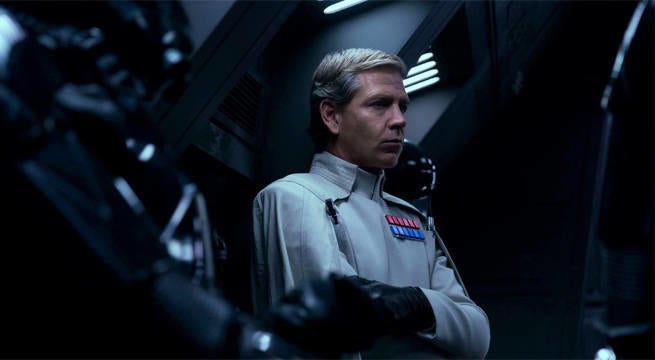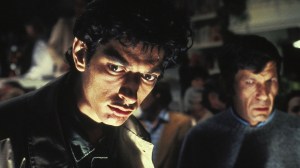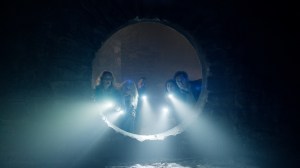One of the riskiest moves for a franchise film is to try and explain, repair, or retcon a plot hole from a previous entry – yet Star Wars actually pulled it off with grace. The franchise is no stranger to plot holes, and as one of the biggest pop culture behemoths of the last half-century, these inconsistencies have been critiqued and parodied to death. Still, somehow, Rogue One: A Star Wars Story managed to patch up the “plothole” of a convenient weakness in the Death Star, in a way that actually felt quite natural and even resonated with the themes of the existing story.
Videos by ComicBook.com
Most fans would probably agree that Star Wars is riddled with plot holes, though they often disagree about which ones are the most distracting, and which can be ignored. Whether you think the Death Star’s fatal flaw in A New Hope was a contrivance or not, it’s definitely one of the things that has gotten the most commentary and mockery over the years. Parodies have really laid into this, questioning why the exact same weakness was present in the second Death Star that was under construction in Return of the Jedi.
There’s also the question of whether you feel this plot hole needed an explanation. After all, A New Hope was created to stand alone as a fun adventure blockbuster, and on the first viewing — or even first several viewings — the Death Star’s killswitch doesn’t stand out for most people. Many of the early parodies that called this out as a contrivance did so in the context of establishing their own geekiness, as if to say that the character who noticed this issue had spent too much time watching and thinking about Star Wars.
[RELATED: Star Wars: Rogue One Director Never Met Carrie Fisher Before Her Death]
On paper, the idea of Disney belatedly trying to “explain” this plot hole in a 2016 prequel movie sounds like a bad idea. Critics and online commenters feared that a new movie delving into this topic would only make things more convoluted, and strain a part of the timeline that already seems overly full of side stories and exposition. The fact that we’re now approaching Andor Season 2 should be proof enough that we were wrong.
Rogue One‘s New Context

Rogue One fleshes out the Rebel Alliance — who they were, how they tried to fight against the all-powerful Emperor, and how they were limited. The script by Chris Weitz and Tony Gilroy doesn’t treat this as a lore-dump about people we already know, but instead a brand-new adventure. This allows all the setup to feel very natural and organic; the film simply trusts the audience to make the relevant connections where needed. If you miss it in an early dialogue scene, you’ll certainly understand when you see the Death Star in all its glory.
In addition to starting from scratch, it was ingenious to focus primarily on the perspective of a new heroine, Gyn Erso. As an outsider opposed to the Empire, yet indifferent to the Rebels, she was uniquely positioned to distinguish her father’s quiet resistance-from-within strategy from the more overt spying-and-shooting of characters like Cassian Andor. She’s almost like a foil to Luke Skywalker — unfamiliar with both sides in this war, yet mistrustful of the Rebels, where Luke was hopeful about them.
The audience uncovers new information alongside Jyn, and grapples with her moral dilemmas as well. It was smart to hold back familiar franchise characters like Mon Mothma and Bail Organa until the audience was firmly in Jyn’s corner, so that we could see them not as characters we already know but as new figures in Jyn’s life. Again, putting all the connections to A New Hope on the back burner makes them feel more natural — like this new information happened to be a part of Jyn’s story, rather than a retroactive worldbuilding decision for 40-year-old movies.
Our New Understanding

Rogue One has clearly been very well-received, and for many fans, it’s grown even more popular in hindsight. On top of that, you can tell the movie achieved its goals because its new information about the Death Star and the Battle of Yavin IV has been folded into the Star Wars mythos seamlessly, and is accepted without qualification across the Star Wars fandom.
That story is resonant because it’s that of real human people balancing the fate of a galaxy against their desires for family and love. As we now know, Galen Erso was a disillusioned scientist working for the Empire when he defected and went into hiding with his wife and daughter. The Empire found Erso and coerced him into returning to work, yet he risked death or worse to build a fatal flaw into the Death Star and communicate that weakness to the Rebels. In a cruel twist of fate, his own daughter was one of the Rebels forced to give her life in order to exploit this weakness, preventing billions more from dying in the long run.
The idea that the weakness was built into the Death Star is simple and effective — perfect for a “plot hole” that many fans didn’t even feel they needed an explanation for. It helps flesh out the Star Wars galaxy by assuring us that many people in and out of the Empire’s power structure were against its tyrannical reign. It also reinforces the powerful themes of collective strength and the essential goodness of the human spirit. No matter how powerful the Emperor became, he couldn’t hold down everyone under his thumb all at once, and he couldn’t pit them all against their friends, neighbors, and families.
Rogue One: A Star Wars Story is streaming now on Disney+, along with the rest of the franchise’s movies and most of its TV shows. Andor Season 2 will tie into this story starting on April 22nd on Disney+.








